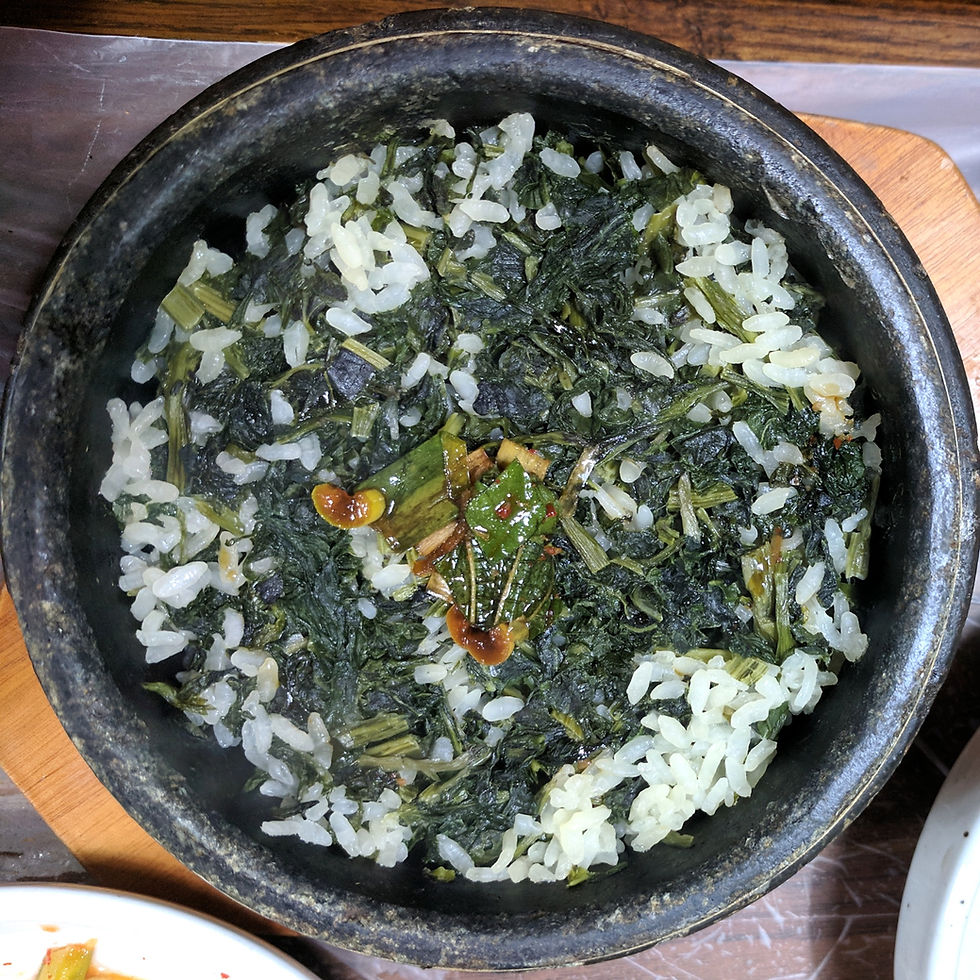Hanwoo, Korea's Most Prized Beef (Hoenggye, Pyeongchang)
- Kyoorl
- Mar 21, 2019
- 2 min read
Updated: Jun 29, 2019
The evolution of the role of hanwoo allegorizes Korea's dramatic shift from an agrarian to industrial economy.
Hanwoo refers to "premium" beef valued for it 40-50% marbled fat content, or the breed of small cattle indigenious to Korea that it comes from. Nicely boxed sets of hanwoo wearing lofty price tags are prominently displayed at department stores around special holidays during which they are considered a coveted gift.
Throughout Korea's agricultural history, hanwoo was valued for its extensive use in farming and transportation. But the 1960s marked the beginning of the country's rapid economic growth which encouraged the increase in beef consumption that resulted in the animal's being redefined as a meat-type cattle.
A couple of months into starting my job in Pyeongchang, our company organized a hwesik and treated us to hanwoo at Goyang Iyagi in Hoenggye, the small village where the Pyeongchang Olympic Stadium (and not much other than a limited selection of small restaurants) was located.
Upon being seated, an overwhelming variety of banchan arrived as a prelude to our main meal; there must've been about five varieties of kimchi alone. Arranging all the dishes to fit on our tables inadvertently became a team-building activity that took considerable collective effort.
Each banchan was delicately seasoned to allow the natural flavor of its star ingredient to shine. Some of my favorites, such as the memil jeonbyeong (buckwheat crepe), showcased ingredients that are considered staples of the local diet. Buckwheat grows in abundance in the Gangwon Province and is extensively used in its cuisine.

Beef with prominent veins of fat soon arrived at our already crowded table. Its near 50:50 fat-to-protein ratio promised juicy, tender bites full of beefy flavor. Hanwoo commands a high price for these qualities, but also for its limited supply. Only 30% of Korea's land is arable, which greatly limits the space available to breed such livestock. The Hanwoo Research Institute, also located in Pyeongchang, is devoted to developing a more efficient hanwoo industry.

The beef certainly lived up to its reputation. I was partial to the unmarinated hanwoo, which I enjoyed most with a dab of salt and a sliver of garlic wrapped in baek kimchi.

I'd be remiss to not introduce Goyang Iyagi's gondeure rice and ssam. Gondeure (Korean thistle), a nutritious plant found abundantly in the mountains of Gangwon-do, is a another staple of the local diet, often dried for consumption as banchan or to be mixed into rice. Each individual stone pot of rice is made to order, so you must consider the cooking time and order accordingly. A black stone pot full of white rice cooked with gondeure was served with a side of gang-dwenjang* (made and aged in-house) and sheets of unseasoned seaweed.

We were instructed to scoop the rice out into an empty bowl and pour hot water into the stone pot to enjoy the nurungji (scorched rice). The fragrant rice, we were told, should be mixed with the gang-dwenjang then eaten in the form of ssam using the seaweed as the wrap. The first bite of ssam packed with the earthiness of the mountains enveloped in the smell of the sea compelled me to continue gorging past my stomach's capacity.

* baek kimchi:"white" kimchi
* gang-dwenjang: dwenjang that is thickly-stewed and often used as a condiment for barbecue/ssam


Comments